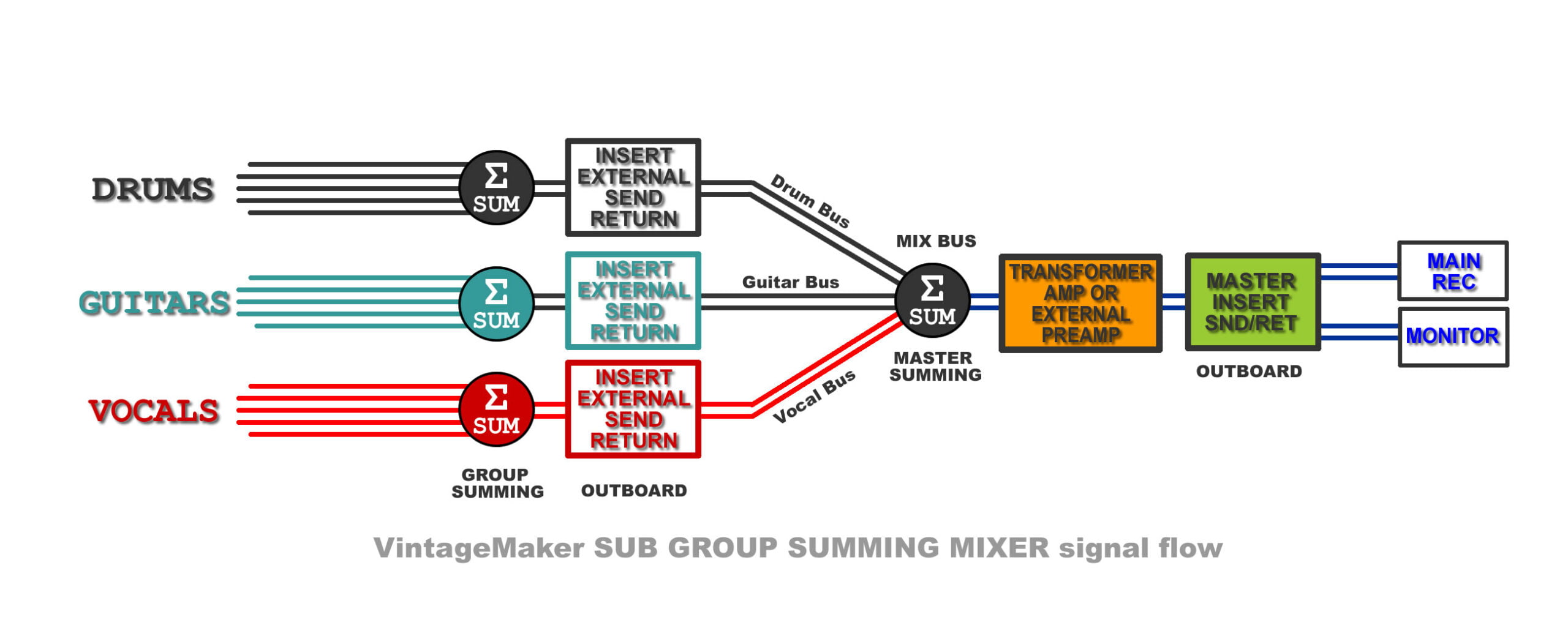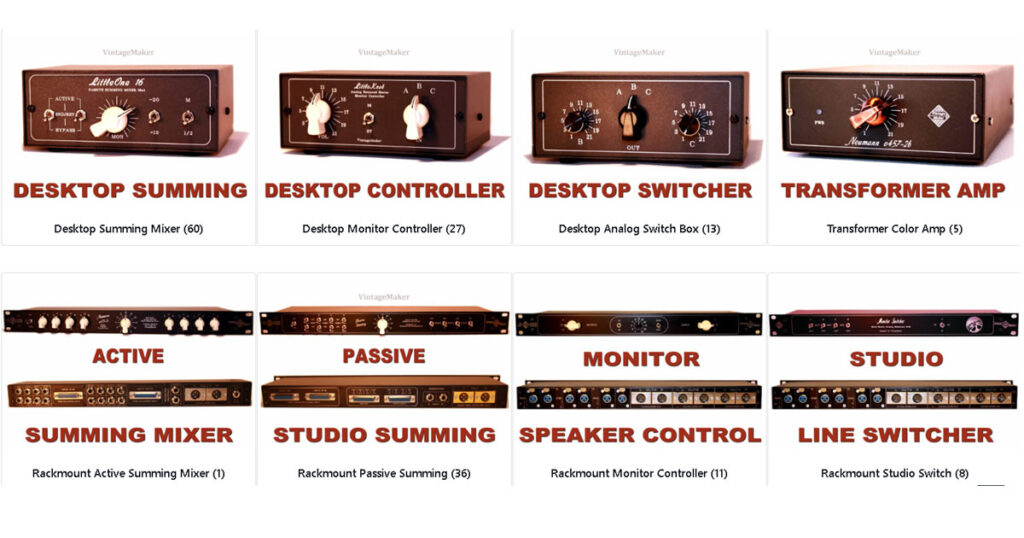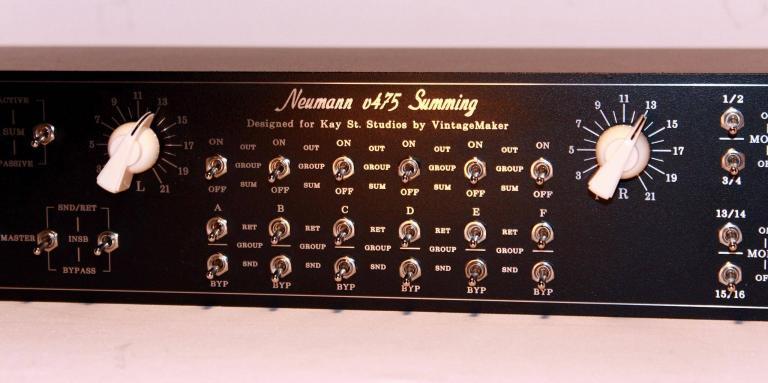
What Is a Subgroup Mixer?
In simple terms, a subgroup within a mixer involves grouping specific channels or tracks and directing them to outputs other than the main output.
Sub-group refers to different sub / bus groups destination for mixing audio channels, allowing you to route and process them with effects such as EQ and Compression. By adjusting the fader of the Subgroup, you can control the volume of the channels that are directed to that specific group.
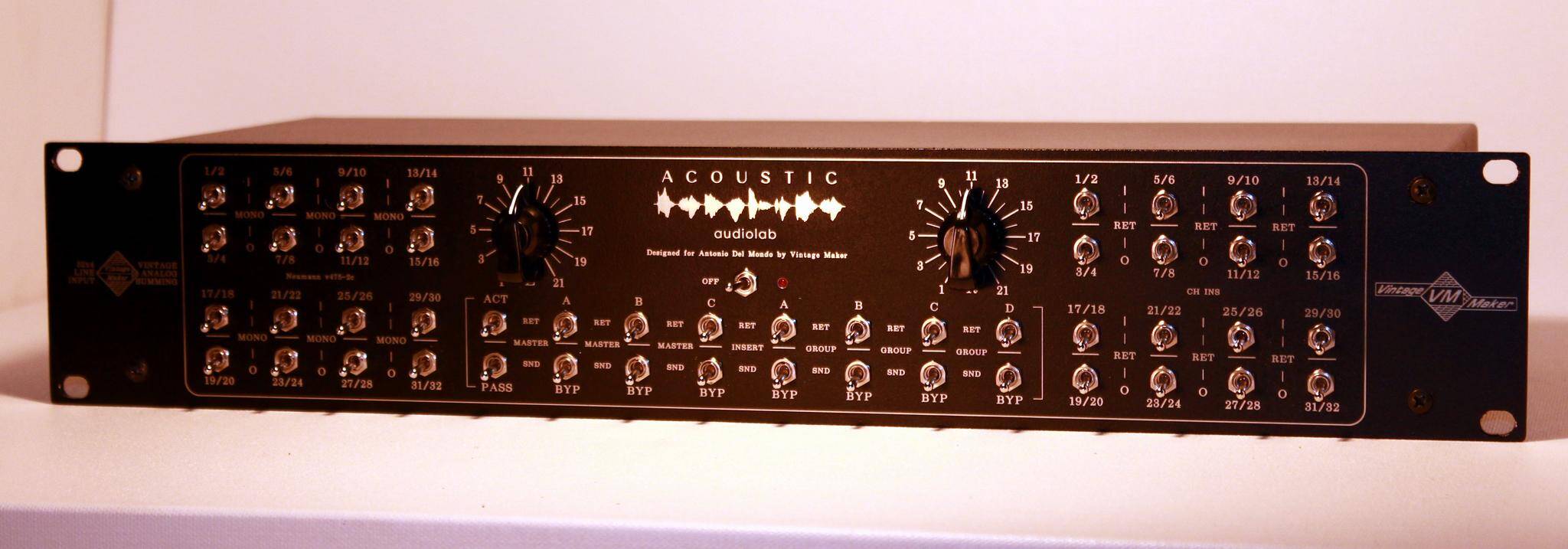
Using Subgroups On Summing Mixer and Organize the tracks logically in to buses.
This way, each bus can have its unique place in the mix, allowing for character EQing, glueing compression Drums or Bass (or any other instruments channels) – you can group assign all drum channels to one of your subgroups and you can adjust the overall level of all drum channels at once without having to individually move each channel fader. Compression – you can insert a compressor on on your desired sub groups – Limiter or Equalizer EQ – you can insert a limiter or EQ on your desired sub groups
Mixing Drums:
One of the primary and perhaps most compelling reasons for utilizing subgroups is in the context of drum mixing. If you’ve ever adjusted a fader, you’re well aware that achieving a solid drum mix is a nuanced and challenging endeavor, more complex than it may initially appear. Drum sounds possess substantial power, and it doesn’t take much to push your signal into the red.
Mixing Vocals:
Another prevalent use of subgroups is for mixing vocals. This is especially relevant in live sound situations or any context where multiple individuals are singing simultaneously. When it comes to routing vocals to a subgroup, the focus shifts more towards applying universal EQ adjustments and effects rather than volume control. Bringing together similar vocal elements in a group can yield exceptionally well-balanced mixes with minimal processing.
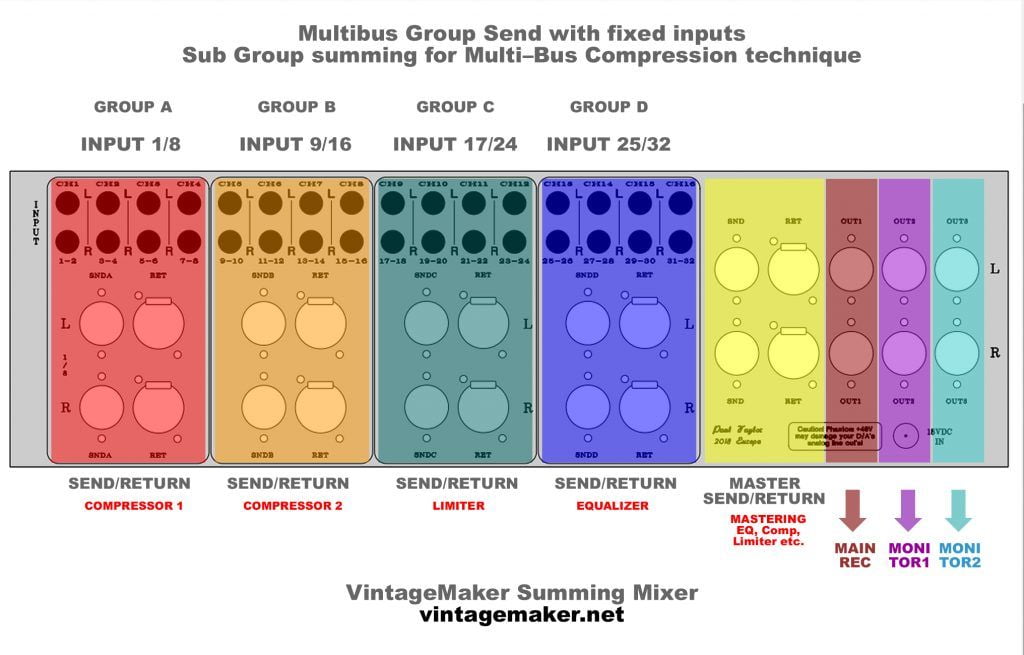
Here’s a basic example: Arrange the tracks logically and group them into 4 buses:
- SUB Group 1: Drums, percussion, and bass
- SUB Group 2: Synthesizers and guitars
- SUB Group 3: Lead vocals
- SUB Group 4: Background vocals
Once we have our subgroups set up, we can use parallel processing techniques to add even more depth and character to our mix.
For example, we might create a parallel drum bus and add heavy compression and distortion to create a more aggressive sound, then blend it back in with the original drum group to achieve a unique blend of the two sounds.

When we’re ready to export our final mix, we can print stems by routing each subgroup to a separate output and recording the resulting audio. This allows us to create custom mixes for different platforms or for future remixing purposes.
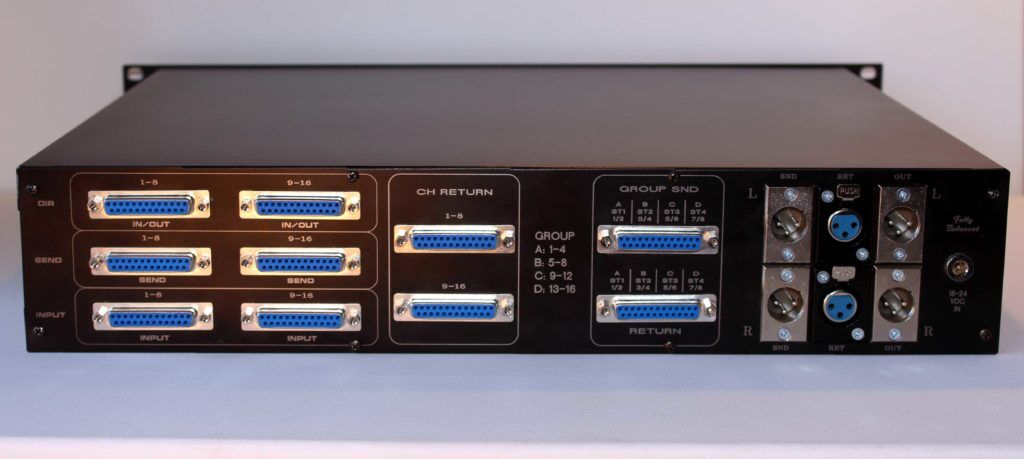
Overall, utilizing subgroups, parallel processing, and stem printing can greatly enhance the mixing process and give us more control over the final product.
Customer says: I am extremely pleased with my decision to go with this summing mixer, especially considering the relatively low price compared to other options on the market.
32 Channel 2-BUS Summing Mixer: https://vintagemaker.net/32-input-lawo-dual-insert/
32 Input Neumann 4-Bus mixer: https://vintagemaker.net/32-input-channel-neumann-summing-mixers/
96 Input Neumann 4-BUS Mixer: https://vintagemaker.net/96-input-neumann-studio-summing-mixer/
24 Input Neumann 6-BUS Summing Mixer: https://vintagemaker.net/sub-group-neumann-summing-for-multi-bus-compression-technique/
Do not find your Studio Gear? Don’t worry! Just inform me about your requirements!


